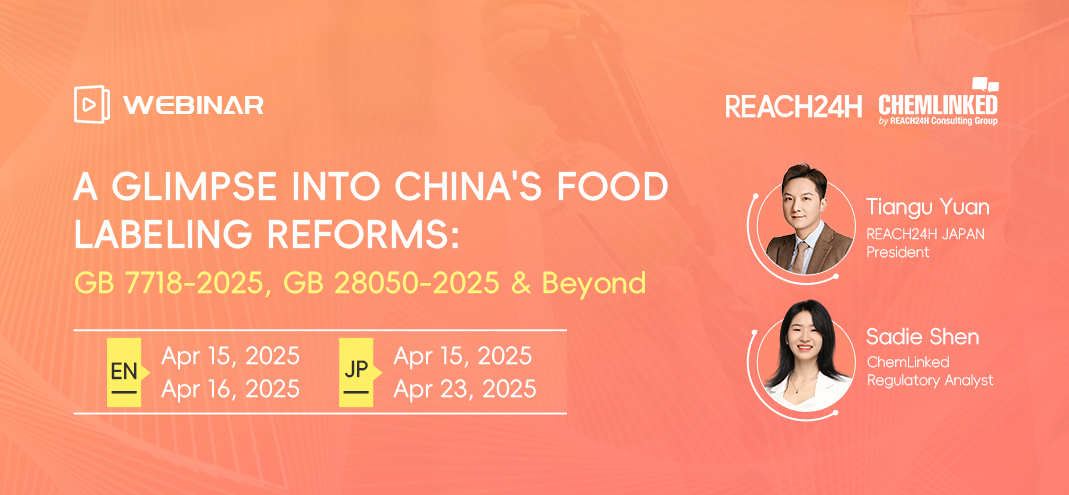CRAC-HCF 2021 Highlights: UK Rolls out Plan to Cope with Challenges under UK REACH
This year marks the first year for the implementation of UK REACH, which entered into force on January 1, 2021. UK REACH maintains EU REACH’ s aims and principles, with the necessary changes to make it operable in a domestic context. Transitional provisions were also introduced to reduce post-Brexit trade friction. Under the Northern Ireland Protocol, the EU REACH Regulation continues to apply to Northern Ireland, while UK REACH will regulate the access of substances to the GB market. This means that all existing NI-based EU REACH registrations will remain valid and GB-based EU REACH registrations will no longer be valid in NI.
As UK REACH comes into force, issues and concerns faced by industry inevitably continue to increase. Julie Mayhew from UK’s Department of Environment, Food and Rural Affairs said in the 13th Chemical Regulatory Annual Conference (CRAC) and Asian Helsinki Chemicals Forum (HCF) that there is still a long way to go in the development of UK REACH. The UK government needs to spend much effort introducing a new IT system for UK REACH that allows industry to fulfil their registration obligations and publishing UK REACH guidance[1].

She also outlined the work plan[2] made by UK Health and Safety Executive (HSE) and Environment Agency (EA) to be implemented in 2021 or 2022, which aims at providing a comprehensive picture of all activities conducted under UK REACH.
- From 2020 to 2021, HSE worked closely with the Environment Agency and the Appropriate Authorities to identify priority restrictions for the use and/or sale of lead ammunition and for substances in tattoo inks and permanent make up for the first year of UK REACH. (see below). HSE will work closely with the Appropriate Authorities and other relevant government departments to identify and agree priorities for initiating restrictions in UK REACH in 2022 and 2023.
| Restriction | Scope of the proposed restriction |
| Use and/or sale of lead ammunition | Environment: wild birds; condition of terrestrial and freshwater aquatic environments
Human health: indirect exposure through eating game shot with lead gunshot
|
| Substances in tattoo inks and permanent
make up |
Human health: consumers (substances classified for carcinogenicity, mutagenicity, reproductive toxicity, skin or eye irritation or corrosion; prohibited for use in cosmetic products; certain specified substances)
|
- EA and HSE are also investigating the risks posed by per- and polyfluoroalkyl substances (PFAS) through Regulatory Management Options Analysis (RMOA).
- HSE has published their draft recommendations[3] for additions to the authorisation list.
The deadlines for grandfathering and submission of DUINs were supposed to close on April 30, 2021 and October 27, 2021 respectively. The good news is that UK Government grants more time to submit DUINs and advises on a temporary reactivation of grandfathering window under UK REACH.
If you’re a GB downstream user and did not submit a DUIN in time, you can still submit a notification. Besides, the HSE will temporarily reopen the window to grandfather EU REACH registrations into UK REACH from 08:00 GMT on December 1, 2021 until 23:59 GMT on December 2, 2021.
Submitting a DUIN is only one step in the registration process. Shirley Shi, a regulatory expert from REACH24H Consulting Group, emphasized that full registration after the grace period is critical for UK REACH’s compliance, of which data sharing will be the key. Data sharing in joint registration is an important task for substance groups. If a study is not available in the group, members will need to agree on how to fill in the data gaps and how to share the costs.
Despite the UK’s exit from the EU, it is undeniable that the EU remains the UK’s largest and most important “neighbor”. The development of chemical regulations in these two markets will have an essential impact on each other. As EU REACH regime continues to evolve, the regulations in the UK and EU markets will certainly become increasingly differentiated. How the UK government will update and improve the UK REACH in the future is worth the industry stakeholders’ attention.


